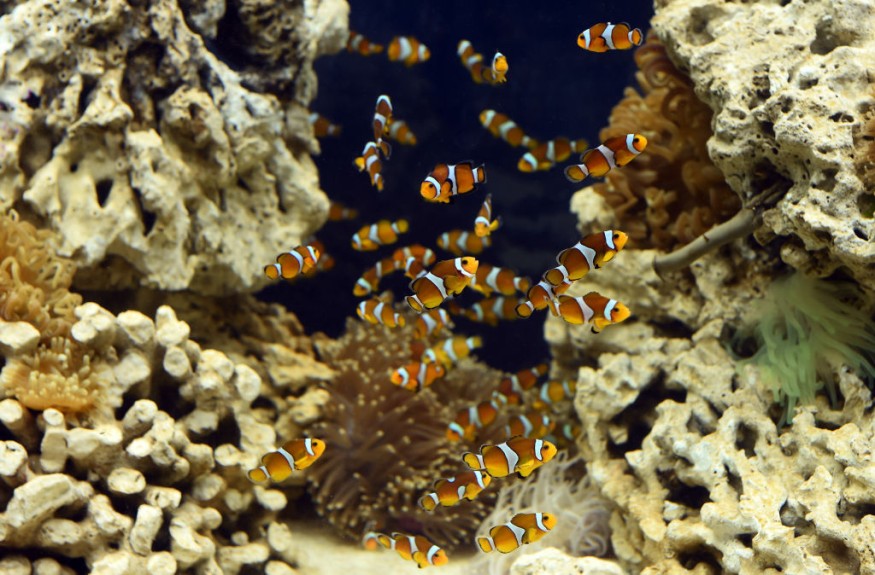
Researchers claim to have discovered how anemonefish, the species of the main character in Finding Nemo, recognize undesirable fish of their own species by counting white spots.
Behavior Of Clownfish
According to Kina Hayashi of the Okinawa Institute of Science and Technology in Japan, anemonefish species that exist in the same regions exhibit a variety of stripy patterns, ranging from three vertical white bars to none.
In the Journal of Experimental Biology, Japanese researchers report how they took young common clownfish who had never seen other species before and placed a small see-through enclosure within their tanks.
The case included either the same kind of clownfish, with an orange body and three vertical white stripes, or another species with different markings.
The findings demonstrated that common clownfishes exhibited more aggressive behaviors toward individuals of their own species than the orange skunk clownfish, which has only a single white horizontal stripe along its back.
However, no significant behavioral changes were seen across other species of clownfish, all of which exhibited one or more vertical stripes.
The researchers then exposed common clownfish to model fish painted orange with no, one, two, or three vertical white stripes.
Scientists discovered that when these groups were painted without stripes, the frequency of hostile behavior toward the model was significantly lower than when they were painted with stripes.
However, based on individual behavior, the scientists discovered that fish with three vertical stripes were more hostile toward the model than those with only one.
Moreover, researchers also observed a rigid hierarchy in clown anemonefish colonies, which determines which fish attacks the intruders.
In the wild, a colony is normally made up of one alpha female, one beta male, and numerous gamma youngsters.
The social status within the colony is governed by relatively minor size differences.
Anemonefish obtain their third and final stripe when they mature into either a male or a female, which is why the current alpha employs harsh means to maintain the status quo, such as chasing out colony members who get too large.
Intriguing Findings
The clown anemonefish is typically a polite host, allowing a variety of species to visit their sea anemones.
But if a member of their own species who is not part of the colony enters their home, the colony's largest fish, known as the alpha fish, will aggressively bite and chase the intruder away.
According to prior study, sea anemones that house common clownfish can also serve as temporary homes for other species, as long as they have horizontal stripes or no stripes at all.
Hayashi said the findings are intriguing since the ecological role of the white stripe pattern in clownfish, also known as anemonefish, had previously been unknown.
"Anemonefish are interesting to study because of their unique, symbiotic relationship with sea anemones. But what this study shows is that there is much we don't know about life in the marine ecosystems in general," says Dr. Hayashi
Related Article : Sounds Fishy: Clownfish Make Calls to Show Status in Social Groups
© 2025 NatureWorldNews.com All rights reserved. Do not reproduce without permission.

